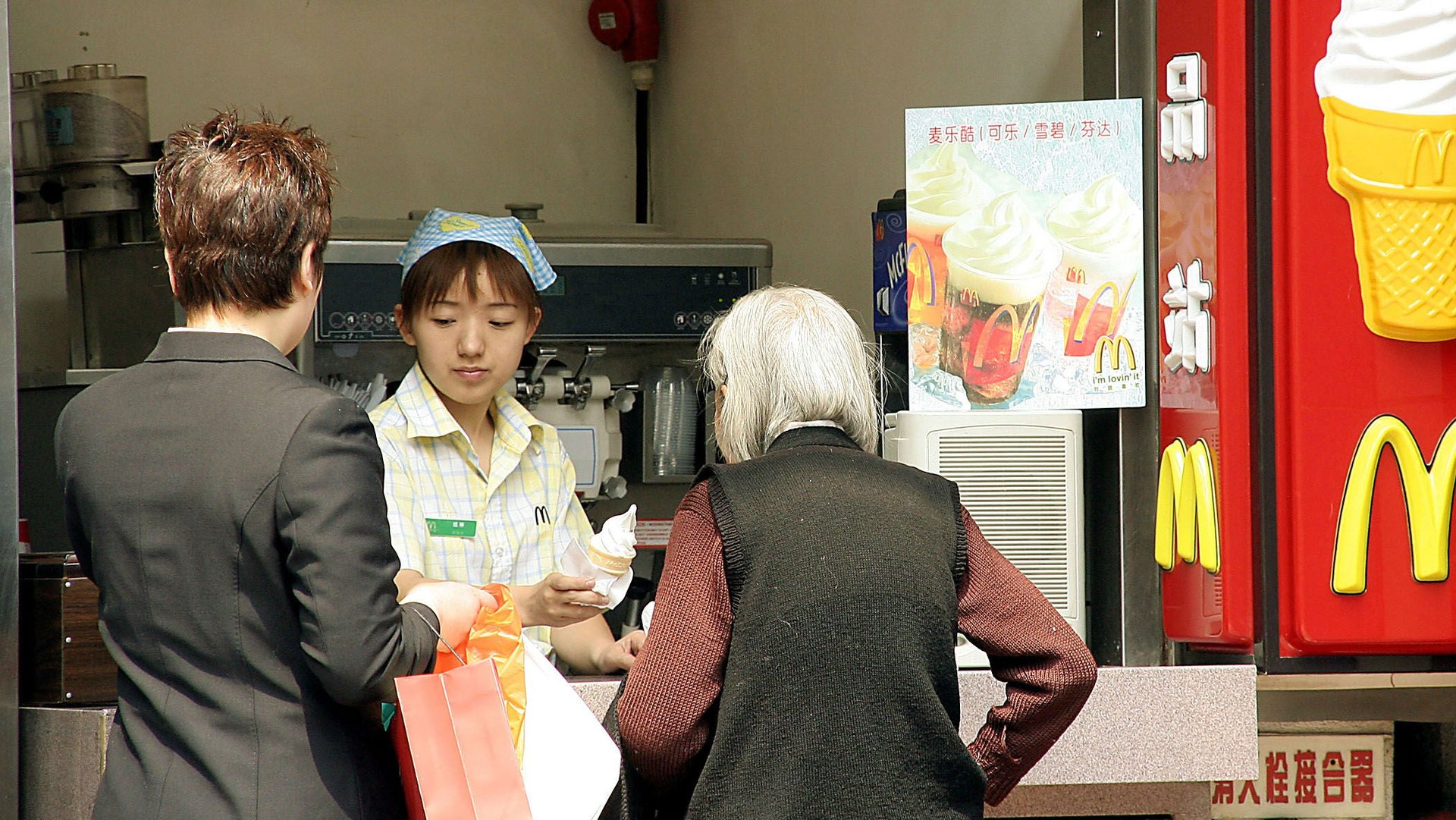China’s hot summer and its growing love of ice cream could be hurting KFC
It’s been so hot in China this summer, that you can actually fry an egg outside. Now, it appears the heat is getting to one of the country’s top fast food chains, KFC.


It’s been so hot in China this summer, that you can actually fry an egg outside. Now, it appears the heat is getting to one of the country’s top fast food chains, KFC.
This week, the chain’s parent company Yum Brands reported a 13% drop in same-store sales in China in July. That extends months of sales declines for the owner of KFC and Pizza Hut—and this time, the company couldn’t blame bird flu, as it did in the spring. So what was the culprit? Sweltering temperatures, says Shaun Rein, managing director of the China Market Research Group.
“Because of the heat, people were looking for cold drinks and ice cream, so McDonald’s, Starbucks Corp, and Häagen-Dazs have been grabbing more share of the late afternoon and evening dining because they have better ice cream and drinks,” he told Reuters, which pointed out that KFC’s website in China largely promoted hot foods, while McDonald’s site pushed its McFlurry and shaved ice beverages. Though KFC does sell ice cream in China, it doesn’t appear to have marketed it prominently over the summer.
As we’ve reported, Yum makes almost half of its profits in China. The chain now faces challenges like the ascendance of local competition and a loss of the novelty it once enjoyed. It’s also still reeling from a scandal over chemicals used in its chickens. On top of that, in July Chinese state media reported that KFC’s ice cubes are 12 times dirtier than toilet water. Diners looking for cooling refreshing treats might very well have been turned off.
Though ice cream was once considered a luxury dessert sold at upscale chains like Häagen-Dazs, over the past decade it has become mainstream enough that Chinese companies now market their own ice cream brands, like Inner Mongolia Yili Industrial Group’s Chocliz (video). But foreign companies also see an opening. Dairy Queen and Baskin Robbins have both made targeting China’s expanding middle class a centerpiece of their emerging market strategy.
Another factor behind ice cream’s rising profile, according to research firm Euromonitor, is that impulse purchasing is on the rise. Ice cream is a relatively small splurge for Chinese earners from the working class and up.